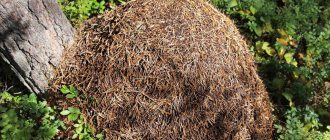General facts about birds
Scientists from Harvard University during a large-scale study found that birds are close relatives of dinosaurs. Scientists believe that the ability to fly helped them survive during the extinction of other lizards. Next, we will tell you about interesting facts about birds for children.
Bird bones are hollow inside and filled with air. A unique biological feature lightens the bird's body weight, so they are able to fly. The jaws of birds do not have teeth, but they have two larynxes, with the help of which they are able to produce pleasant melodic sounds. Birds are able to sing from birth - this is how they communicate with each other, warn each other about danger and protect their territory. It is known that the body temperature of birds is several degrees higher than that of humans.
There are currently almost 11,000 different species of birds known. We will talk about some interesting facts for children from the life of birds in the following chapters of our article.
Kedrovka
The nutcracker is a taiga bird. They called it that because there are the most nutcrackers in the cedar taiga. As soon as the pine nuts ripen, the nutcracker makes reserves from morning to evening. He stuffs his crop with nuts, and then stuffs them into cracks in the rocks, hides them in the hollows of trees, and buries them in the ground.
In the spring, when the snow melts, the nutcracker often forgets where it buried its reserves, but finds nuts from other nutcrackers and feeds. Squirrels, chipmunks, and mice feed on nutcracker reserves. But many nuts remain in the ground. Small cedars grow from them. This is how the nutcracker plants cedar forests.
Hummingbird
The smallest bird species in the world is the Bee Hummingbird. The length of its body does not exceed 6 cm, the baby weighs only 2 grams. Their habitat is the island of Cuba. Now we will tell you in more detail about interesting facts for children about birds of this species.
The biological structure of the hummingbird's body is very interesting. For example, they are known to have a forked tongue, which helps these miniature birds feast on nectar. The cardiac muscle of hummingbirds occupies almost half the length of their body, as when flying they reach speeds of up to 79 km/h, and the frequency of wing beats is usually 50-80 per second.
Some features of the flight of these miniature birds are noteworthy. For example, these are the only birds that can hover in the air and fly backwards. Such maneuvers require considerable energy expenditure, so by the end of the day, hummingbirds eat a volume of food that exceeds their own weight.
Hummingbirds are stunningly beautiful birds. They are distinguished by their iridescent plumage, often with a metallic sheen. There are special places in Cuba where tourists can feed hummingbirds and admire these beautiful creatures of nature.
Sparrow owl
The sparrow owl is a small nocturnal predator. As it gets dark in the forest, the owl silently flies over forest clearings, over vegetable gardens and listens. A field mouse squeaks, an owl rushes at it and grabs it. Sychik brings his prey to the hollow of an old oak tree. When there are a lot of mice, the little owl stores them in reserve for the winter. In winter, you can find a lot of frozen mice in the hollow - this is what the little owl brought up. The mice gnaw the grain and devastate the fields, and the owl helps preserve the harvest.
African ostrich
The largest bird species in the world is the African ostrich. Due to the peculiarities of its biological structure, the ostrich is not capable of flying, but adult individuals are capable of running at speeds of up to 70 km/h. The size of these birds is amazing: height reaches 280 cm, and body weight - 120 kg.
The habitat of ostriches covers almost all of Africa. They feed mainly on plant foods. Ostriches lead a sedentary lifestyle and are found in small groups, which usually include one male and several females.
Thanks to their excellent vision, ostriches survey the territory and try to leave it before predators appear.
The male takes full care of the offspring. After the females have laid their eggs in a special hole, which he previously dug in the ground, the male begins to hatch them. When the offspring hatch, the model parent protects it from predators and hides it under its wings, protecting it from the sun.
Woodcock
Woodcock is a woodland sandpiper. His eyes are as big as two currants, so he can see in the twilight. It will begin to get dark, a woodcock will emerge from the bushes onto the forest road and walk on the ground, feeding. It puts its beak into the soft ground and feels with its beak: if a worm or bug moves nearby, it immediately catches it and swallows it.
And during the day, woodcock hides under the bushes; you walk nearby and won’t see it. If you disturb an aldercock in a nest, it will leave the nest and transfer the small chicks to a new place. Flies over the forest and holds a chick in its paws. Until all the chicks are transferred, the woodcock will not calm down.
Kiwi
The kiwi bird is the only bird species in the whole world that does not have wings, and their feathers look more like wool. New Zealand is the habitat of amazing birds. Next, we will tell you about interesting facts for children about birds - kiwi.
Kiwi is active at night, but during the day it prefers to hide in a hole. Birds of this species always have several shelters, which change from day to day. Kiwis feed on berries, insects and small crustaceans. This bird species is monogamous. After creating a pair, the female lays an egg, which is incubated by the male. Parents do not care about their offspring and leave the nest after the chick hatches.
The following chapters of the article are devoted to interesting facts about wintering birds for children.
goshawk
When a goshawk appears, there is a commotion in the forest: you have to hide. Even hares hide on the ground. A goshawk quickly flies between the trees, looking out for prey, and behind it, forest birds fly squeaking and screaming: jays, tits, siskins. The squirrel gapes, does not have time to scurry into the hollow - the goshawk will grab it. From a great height, the goshawk sees the wood mouse, and the black grouse if it is not hiding well. The goshawk is a forest predator.
Woodpecker
Woodpeckers are distributed almost everywhere. They lead a sedentary lifestyle. Woodpeckers feed on insects and their larvae, which they get from under the bark of trees. Next, we will tell you in more detail about interesting facts for children about birds of this species.
The speed of a woodpecker's beak strikes reaches 25 times per second. The biological structure of the bird is completely adapted for this lifestyle. It is worth noting that, when obtaining food, woodpeckers deliberately choose diseased trees due to their excellent hearing.
During the cold season, birds feed on nuts, seeds and acorns. Sometimes, in search of food, they move from forest areas closer to people’s homes.
Male woodpeckers choose a tree and prepare a nest where the female will lay eggs that will be incubated by both parents. Woodpecker chicks are born completely helpless, and their parents feed them for 20 days.
Crow
Forest crows live in pairs. And they live for two hundred years or more. A pair of ravens flies over the taiga and carefully inspects every clearing, every stream. If they spot prey: the remains of a deer that was killed by a bear, or a dead fish on the shore, they will immediately let other crows know. “Kruk-krruk-krruk,” the cry of a raven rushes over the taiga, it notifies other ravens that it has found prey.
You will never confuse a hooded crow with a forest raven. The hooded crow has gray and black feathers, and the collar is all black. A crow flies closer to the village in winter, pecking at something in a landfill, but a raven never gets close to human habitation; it is a wild bird of the forest.
Tit
The titmouse is easily recognized by its bright plumage - a bright yellow belly, black head, white cheeks and a long tail. Tits are distributed throughout Europe. Next, we will tell you more about interesting facts for children about birds - tits.
The tit has a rich musical repertoire - scientists have identified several dozen different sound variations.
The female is engaged in the construction and arrangement of the future nest, incubating the offspring. At this time, the male brings her food. After the chicks are born, they are fed by both parents.
Tits feed on insects, seeds and fruits. These birds are very useful because their main function is to destroy forest pests.
The fact that it is very difficult for wintering birds to get food in the cold season deserves special mention, so you need to help them: build bird feeders yourself or replenish food supplies in ready-made feeders, which are probably located in the park areas of your city.
Capercaillie
Capercaillie is a resident of forest thickets. This is a big forest rooster. In the summer, when blueberries, lingonberries, and blueberries ripen, the capercaillie feeds on berries. And on the banks of streams, wood grouse peck small pebbles so that the pebbles in their stomachs, like millstones, grind the berries. In winter, capercaillie feeds on pine needles.
The millstone stones grind them down. In the spring, as soon as the snow melts in the forest, wood grouse begin to talk - to sing their spring songs. The capercaillie walks on the ground like a turkey, spreading its tail like a fan, and clicking its beak, as if two sticks are knocking against each other. And the song ends as if a knife is being sharpened on a whetstone. At the end of the song, the wood grouse goes deaf, which is why it was called the wood grouse.
How do birds live in winter?
How do birds cope with frost in winter? It turns out that they are preparing for winter just like people! How do people prepare for winter? (They change into winter clothes and insulate their homes.) Who else dresses in warm winter coats in winter? (Animals - hares, foxes, wolves) And birds, too, by winter change their plumage to a warmer, thicker and longer winter plumage. Birds have air between their feathers. It keeps the cold out and retains the heat. So they don't freeze!









